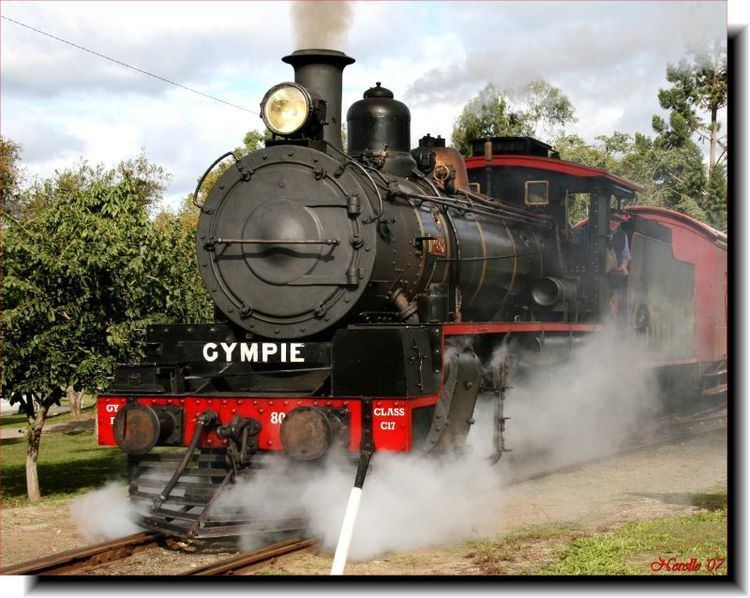Power type Steam Total produced 227 | Build date 1920–1953 | |
 | ||
Builder North Ipswich Railway Workshops (16)Armstrong Whitworth (25)Clyde Engineering (20)Walkers Limited (138)Evans, Anderson, Phelan & Co (28) Serial number AW 850–874,Clyde 494–497, 499–513, 558,EAP 158–185,North Ipswich 83–92, 158–163,Walkers 319–358, 399–438, 474–485, 492–537 | ||
The Queensland Railways C17 class locomotive was a class of 4-8-0 steam locomotives operated by the Queensland Railways.
Contents
History
The C17 class was introduced as an improved version of the C16 class. Per Queensland Railway's classification system they were designated the C16 class, C representing they had four driving axles, and the 17 the cylinder diameter in inches.
The design was so successful that 227 locomotives were built from 1920 when the first engine N° 15 entering service through until 1953 when N° 1000 was delivered. The Commonwealth Railways NM class were of the same design.
They were used to haul Mail trains on lines could not accommodate heavier B18¼ class, also suburban passenger, mixed, goods and branch line trains. Until 1948 they were the heaviest engines that could work north of Mackay. Prior to the introduction of 60 long tons (67 short tons; 61 t) diesel electric locomotives, they were responsible for hauling the air-conditioned Inlander, Midlander and Westlander trains for parts of their respective journeys.
First engines had large steam domes, open cabs and C16 style tenders. Those built from 1938 onwards, commencing with N°858, had small steam domes, sedan cabs with welded tenders and also larger diameter (9 1⁄2 in or 241 mm) piston valves. The two types of boilers were occasionally interchanged at overhauls and by later years most of the old style ones had been replaced. The last 40 engines, N°961 to N°1000, were fitted with Timken roller bearings and painted brown. They acquired the nickname of Brown Bombers after American boxer Joe Louis. Those overhauled in the last years of steam operations were repainted black. A number of modifications were carried out over their life including the fitting of large mushroom air snifting valves. Several had additional sandboxes and/or rear headlights fitted at various times for working lines where no turning facilities were available.
Preservation
Twenty-five have been preserved:
